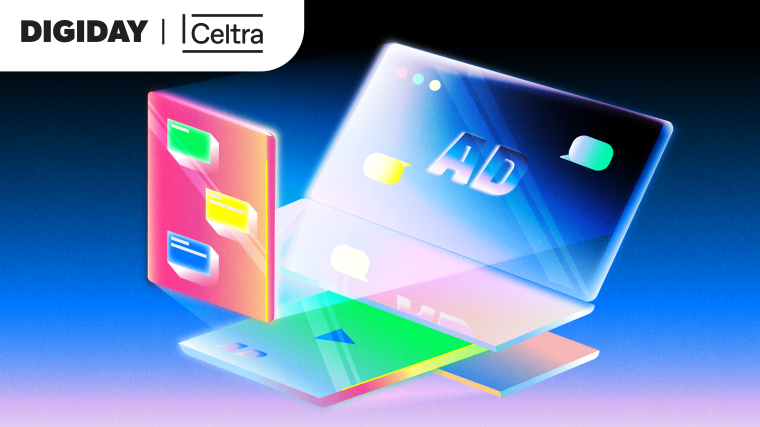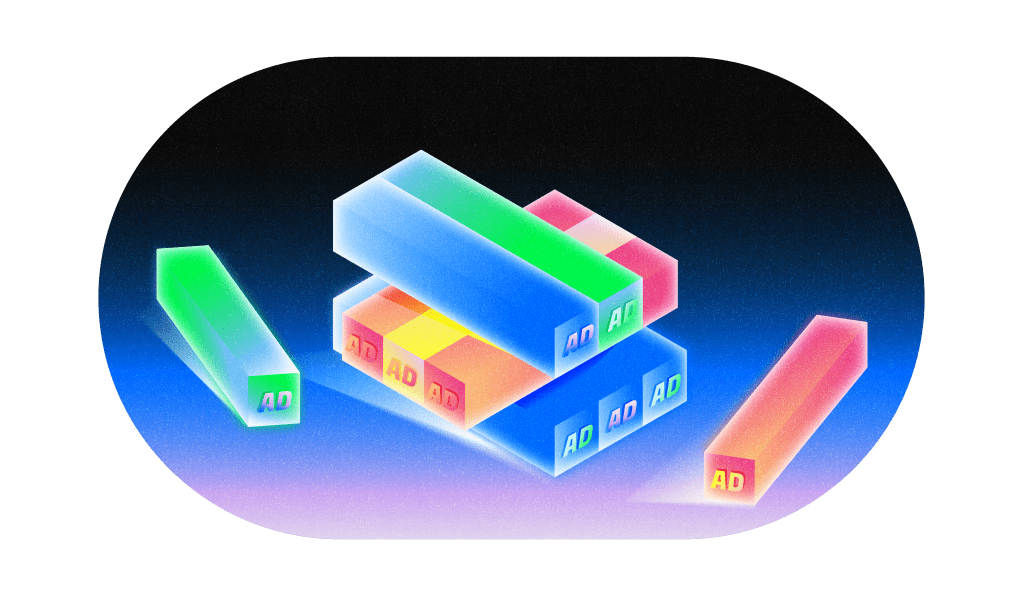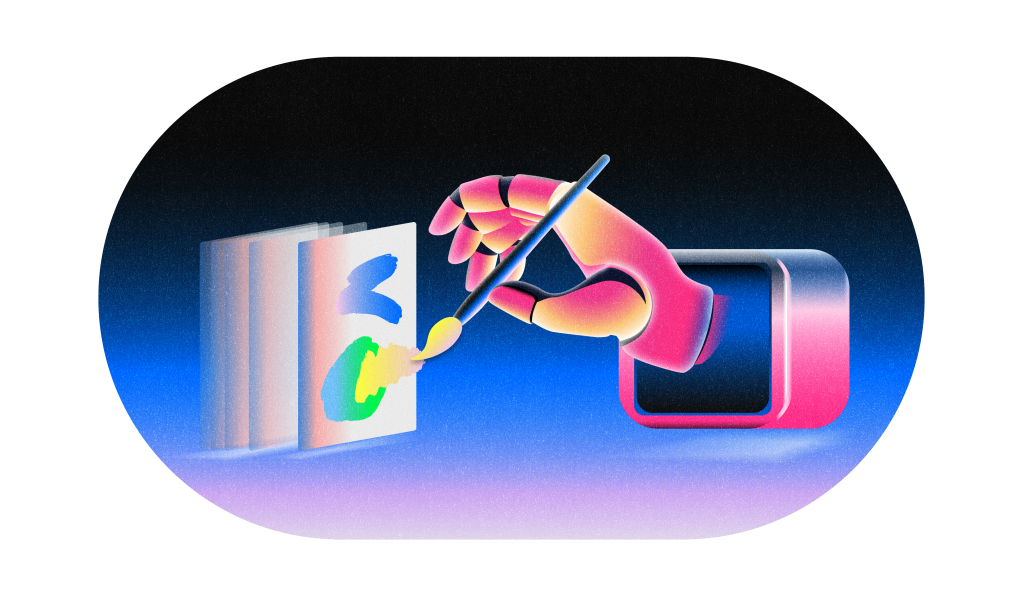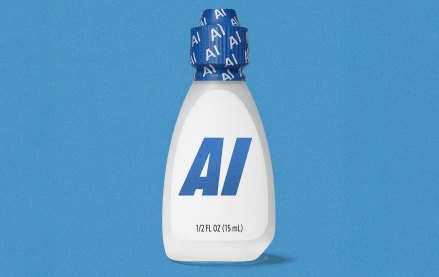
This State of the Industry report, sponsored by Celtra, explores how brands and agencies produce and optimize creative digital campaigns to drive performance.
Across the digital media landscape, marketing teams are adapting to diverse advertising platforms and handling increasing content demands — all while expediting speed to market without compromising quality. In the process, brands and agencies are leveraging new production and automation tools to create increasingly effective, engaging and impactful campaigns.
In this new State of the Industry report, Digiday and Celtra polled 111 brand and agency respondents to learn how they balance innovation, cost-effectiveness and technology to streamline collaboration and creative ad production. Marketers are also taking a closer look at ad creative optimization, reinforcing its integral role in shaping campaign performance.
“What brands and agencies are facing is slow turnaround times, increased costs and limited scale because of outdated, linear production steps,” said Tanja Užmah Mosquera, senior director of marketing at Celtra. “Marketers can’t have it all — fast, low-cost, high-quality production — so they are bound to get overwhelmed with these content demands.
“To solve that, enterprising marketing teams are implementing technology to solve those bottlenecks and work smarter and faster,” she said. “But it’s not only the technology. Moving away from linear processes and aligning both media and creative teams, from start to finish, makes it easier for them to leverage data and learning for better decisions and campaigns.”
This report explores how teams refine processes to personalize, measure and optimize ad creative across channels and formats. Our survey also helps unpack the role of AI and automation in the coming year (among our respondents, 72% said they already use generative AI design and production tools in their ad-creative production). With AI, automation and attention to ad-creative steps at each workflow phase, brands and agencies are improving cross-functional collaboration in their pursuit of personalized, data-driven campaigns that connect with audiences and drive business outcomes.

With 2025 planning underway, our survey shows that brands and agencies are prioritizing ways to improve relevancy and personalization of their ad creative (67% said so) and introduce or expand the use of AI and automation for producing ad creative (67% said so).
Other goals our respondents have for their digital advertising include improving ad-creative quality (66%) and performance (65%).
As the following chart illustrates, brands and agencies are embracing a variety of digital ad creative formats in their media mix, including social media ads (84%), email ads (69%), display ads (63%) and audio ads (63%).
At least half of our respondents also create video ads (56%), search ads (56%) and digital out-of-home ads (56%). However, less than a third are experimenting with emerging formats, such as interactive ads (26%), AR/VR ads (25%) and shoppable ads (24%). Regarding that finding, the high costs often associated with AR/VR and other interactive experiences could contribute to respondents’ putting less creative investment in these areas.
Digital advertising is essential for building brand awareness, engaging audiences, driving sales and gathering valuable insights in today’s dynamic landscape.
Regarding ad creative, 92% of our respondents said it is a “significant” contributor to the overall success of their advertising revenue, including 27% who describe it as “very significant” to advertising revenue.
These results echo findings from Kantar and WARC that show creative and effective ads generate more profit than low-quality creative.
Yet, while our respondents cite the importance of ad creative, it doesn’t command a corresponding majority of their budgets. Most of our respondents (78%) have allocated 40% or less of their budgets to ad-creative production and optimization, including technology and staff.
This may correlate with shrinking marketing budgets in today’s changing media landscape. According to Gartner, average marketing budgets have fallen to 7.7% of overall company revenue in 2024, down from 9.1% in 2023. Marketers may also be spending in other high-priority areas such as data analytics, customer acquisition and retention, or there may already be efficiencies resulting from advancements in AI and automation that are allowing the teams we surveyed to do more with less in terms of budget specifically earmarked for creative.
Given the significance of their ad creative to revenue, our agency and brand respondents talked about changes to how they staff their digital ad creative production in the coming year.
While only a quarter of respondents will use a mix of in-house and external teams to produce ad creative in 2024, 57% expect to use in-house and external teams for ad creative production in 2025.
As the survey suggests, marketing teams increasingly expect to rely on external agencies or a hybrid of external and internal teams for ad creative production. Part of this may be due to an after-effect of the “big stay,” in which U.S. workers are remaining at jobs they have rather than taking chances on the hiring market.
As Robert Half reported earlier this year, 82% of marketing and creative managers said they face challenges finding skilled candidates in today’s hiring environment. In response, to help augment their permanent teams, 64% of marketing and creative managers plan to increase their use of contract professionals in the second half of 2024.

This trend may be further driven by the demand for innovative content strategies, such as AI-enhanced creative processes, which require expertise that many internal teams may not yet possess.
“The hybrid model is gaining traction as brands seek the perfect balance between maintaining in-house control while also tapping into external expertise for specialized knowledge and implementing cutting-edge technologies like AI and automation,” said Mosquera. “This approach allows them to stay agile and innovative, harnessing the best of both worlds to drive growth and stay ahead of the competition.”
Meanwhile, in another finding from our survey, brands and agencies are primarily turning to their ad operations (61%), data analytics (58%) and media buying/planning teams (57%) to optimize their media buying optimization. However, nearly a quarter of respondents (24%) still have creative teams involved in media buying optimization.
Among our respondents, digital ad creative on social (72%) and display (69%) performs the best. This is followed by audio (47%), mobile/in-app ads (40%), CTV/OTT (39%), retail media networks (39%) and digital out-of-home (36%).
Furthermore, as the next chart illustrates, most respondents cited compelling messaging and storytelling (64%) as the creative tactic that performs best for their brand or agency, just edging out brand consistency (63%).
Relevant and personalized content (57%), mobile optimization (52%), engaging animation and video (49%) and interactive videos (49%) are also valuable creative tactics.
Less than a third of our respondents cite emerging creative approaches — such as AR/VR ads (33%), interactive elements (32%) and shoppable ads (22%) — as driving strong performance.
Within the internal and external structures they’ve identified, a mix of teams plays a role in producing and optimizing ad creative.
While 87% of our respondents have a creative team involved in production, just 13% have that element of their organization engaged in optimizing ad creative. Creative teams still need to be involved in the optimization process, however. When performance marketing and creative teams communicate clearly and consistently, their creative optimization strategies will prove much more effective than done without the creative team’s involvement.
Media buying and planning teams, as well as data analytics teams, ad operations and external teams, play a more prominent role in ad-creative optimization than ad-creative production. Just shy of half of our respondents have marketing teams involved in production (49%) and optimization (47%).
In our survey, most brands and agencies rely on traditional KPIs like click-through rate (78%) and ROAS/ROI (75%) to gauge the success of their ad creative. Our respondents also cited cost-per-click (64%), ad placement performance (59%) and conversion rate (58%) as significant metrics for measuring the performance and outcomes of their ad creative. Attention metrics, such as time-on-site (16%) and viewability rate (10%), are less significant when evaluating performance.
Regarding optimization, the following chart reveals that brands and agencies are primarily leveraging A/B testing (76%) to optimize their advertising creative and improve performance.
According to Mosquera at Celtra, creative testing is critical to uncover findings beyond a single piece of creative.

“We see some marketing teams betting everything on one creative,” she said. “They’re not using the tactic of testing and iteration. It’s usually because they’re unable to produce all of that creative, but they’re also missing out on having data that can validate concepts.”
Other top-cited optimization tactics include integrated workflows (55%), automated workflows and task management (51%) and dynamic creative optimization (50%).
Beyond budgets alone, including team and resource assignments of all types, 40% of our respondents dedicate more resources to optimizing ad creative than media buying, while 37% assign more resources to optimizing media buying than ad creative. About two in 10 respondents (19%) equally allocate resources to optimizing media buying and ad creative.
While brands and agencies may give more overall resources to ad-creative optimization than media buying optimization, 77% of our respondents report that optimizing media and creatives is a “connected process.” Only 19% describe media and creative optimization as entirely separate processes.
“We have seen a shift in which creative optimization resonates, and people are perceiving how important it is,” Mosquera said. “In past years, it was easier to optimize media, whereas creative has always been more complex to execute because of a large number of channels and targeting opportunities.”
As brands and agencies prioritize improving the relevancy and personalization of their ad creative, our survey shows that 86% of our respondents use first-party data to inform their ad-creative production. This is followed by demographic data (77%), third-party data (53%), historical data including behavioral data (52%) and engagement metrics (52%).
As Mosquera explained, while historical data is often overlooked, it plays a vital role in production and optimization decisions.
“Parameters for reviewing past performance depends on how much marketers have pivoted: how many times they’ve changed their strategy, how frequent their advertising is,” Mosquera said. “We know some brands do one or two campaigns each year, but other brands like to iterate and move faster and may be more flexible and agile. The biggest difference for marketers would be looking at the historical data because right now they’re not doing it as much as they could or should be.”
Meanwhile, generative AI has already entrenched itself in the ad-creative production process. Among our respondents, 73% already use generative AI design and production tools.
Other popular tools and platforms used for creative production include analytics and performance tracking tools (62%), manual/human-driven design and production tools (59%), creative automation and management platforms (57%) and digital asset management systems (52%).
Generative AI technology has gained massive attention across numerous industries over the past couple of years and has undergone significant changes over that time, too. While early models produced less sophisticated images, they’re now generating professional-quality images, 3D graphics, voices and more. They’re even making strides in video, which will be huge for those who aren’t able to shell out for significant production costs.
“AI and automation allow marketers to create more — and gain more historical data for down the line,” Mosquera said. “Instead of focusing on one creative, you’re able to address personalization and targeting requirements through a variety of creative.”
Considering the role of artificial intelligence and automation in brands and agencies’ ad-creative production, most of our respondents (60%) use these tools for content optimization and personalization.
“With the help of automation and AI, you’re able to produce almost anything you want to,” Mosquera said. “The goal is just to create the most relevant ad creative for each user, however granular your strategy is.”
With that in mind, teams are also using AI and automation for automated workflow and task management (56%), content development and creation (55%) and creative template generation and optimization (52%).
More specifically, brands and agencies are using generative AI for image generation and editing (65%), copywriting (62%) and design (61%) as part of their ad-creative production and workflows.
Overall, fewer respondents said they are using generative AI for video creation (41%) and storyline or messaging development (35%).
However, brands such as ridesharing company Lyft are already succeeding by automating video-based creative. With limited resources to produce new personalized video campaigns at scale, Lyft used Celtra’s robust and flexible Creative Automation platform to create a modular video production workflow.
The templates allowed the creative team to manage multiple variations of unique video ads, with built-in custom animations and effects to align headings and CTAs with the video footage in the creative. Lyft’s growth team used Celtra’s content feeds to determine which offers and messaging to feature in ads without impacting the original design.

“Modular production gave us a scalable process for creating powerful, personalized video creatives. Celtra significantly saves us time and costs while driving efficiencies across our lower-funnel socials,” said Kathy Lee, growth manager at Lyft. “When we launched our video social campaign, we saw it had one of the lowest spends and CPAs but the highest CVR.”
Artificial intelligence and automation also play a role in ad-creative measurement and optimization, as our respondents report using AI and machine learning for performance analysis (65%) and DCO (55%).
“AI can be used in multiple ways,” Mosquera said. “We’ve implemented it very tactically in our platform for copy suggestions, translations and background removal for images, making those tasks faster and enhancing what you’re already doing. There’s also a strategic use for AI, which is more about analyzing past performance and seeing what’s similar and what’s worked in the past. We’re expecting that to develop into future recommendations for creating best-performing assets as well.”
As digital advertising evolves, our respondents are focusing on challenges across their ad-creative production and optimization steps.
On the production side, 61% of respondents cited creative fatigue as a significant challenge, followed by creative testing and optimization (47%) and creative production bottlenecks and short deadlines (46%).
“Personalizing and creative testing are crucial tactics for marketers trying to improve their ad performance, but not everybody is doing it because they have a limited creative supply,” Mosquera explained. “The first step is to create that variety so you can test, experiment and start to optimize. If you’re not seeing the performance you’re expecting, you can swap out as many creatives as you want to have in case of fatigue or for optimization.”
Regarding optimization, the chief challenges are audience targeting and personalization (58%) and cross-functional collaboration and fragmented workflows (57%).
While tailoring creative to different markets can be a heavy lift, localization is worth the effort, according to Mosquera. Here, again, creative automation streamlines the process for more relevant creative while preserving brand integrity.
For instance, sportswear giant Nike worked with Celtra to implement creative automation and develop a global toolkit for its Member Days campaign. The campaign, which recognizes customer loyalty, demanded teams to produce market-specific creative while maintaining brand consistency.
The brand’s toolkit consisted of on-brand templates and a user manual, allowing Nike’s local teams to easily swap imagery and copy and create thousands of localized creative on demand. Working with Celtra’s creative automation tool, Nike produced more than 17,000 creatives in a single round—a 19.5x gain in production efficiency.
Looking ahead to the remainder of 2024 and into 2025, AI and automation will continue to play a significant role in transforming ad-creative production and automation.
Our respondents have identified data-driven creative (70%) and advanced measurement and attribution (67%) as areas of opportunity for ad-creative production. Other opportunities include AI and machine learning (59%) and creative automation (48%).
Despite challenges, savvy marketers are poised to capitalize on opportunities in advanced measurement, AI and creative automation to deliver the personalized, data-driven creative that resonates with audiences. Partnerships are essential for unlocking the full potential of these resources.
“Brands and agencies need to evaluate their current advertising — the volume, formats, complexity, frequency and so on — and determine if they’re looking for technology that will solve a specific problem or multiple problems, whether that be a design tool, media tool or an end-to-end workflow platform,” Mosquera said. “With any technology, marketers will want control over their brand identity to create more relevant advertising and true data-driven creative.”
By aligning media and creative teams and embracing technology, brands and agencies can meet the rising demands for high-quality, relevant, personalized ad creative and drive better business outcomes in the dynamic digital landscape.



